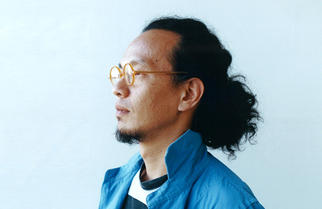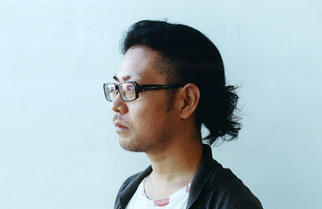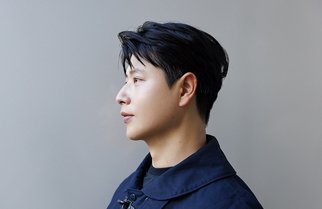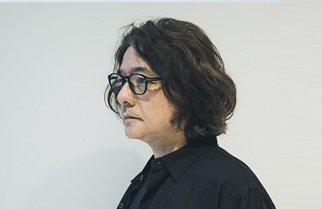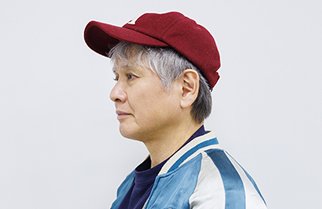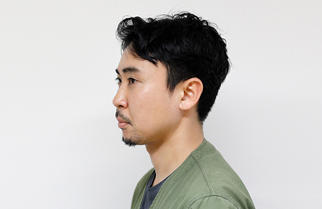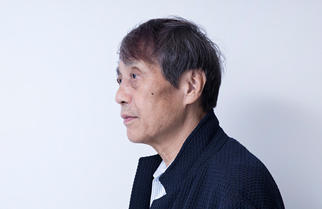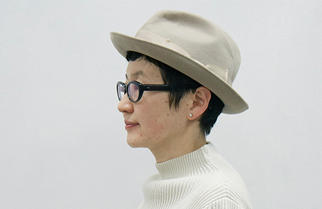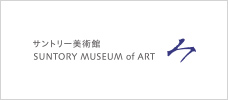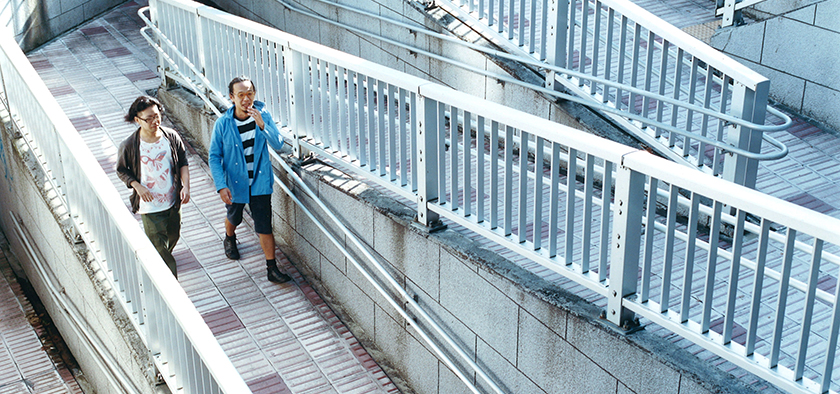

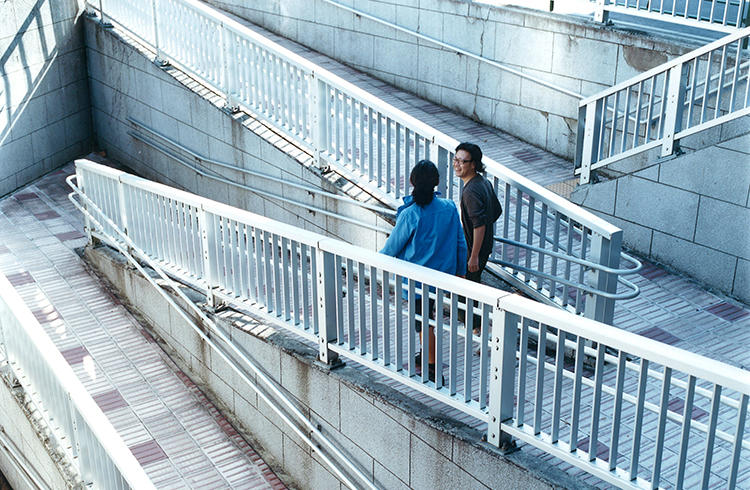
How would you turn Roppongi into an area of Design & Art?
Create a special zone and change the real estate rules - Nagasaka Take educational steps to advance understanding of art - Ohara
Jo Nagasaka is an architect who heads Schemata Architects, a team of designers specialized in creating venues, while Fumikazu Ohara is an art director engaged in the bookbinding design of numerous magazines and books such as "R25" and "TRANSIT". Nagasaka and Ohara are close acquaintances and they talked freely and frankly, touching on many subjects. Nagasaka noted that design and art are two different things, while Ohara pointed out the importance of thinking skills in appreciating art. What specific steps did the two propose for the future of Roppongi?
Involvements with Roppongi
Ohara I've been working for the past five years as director of "DESIGNTIDE TOKYO" which is held every year in the autumn. The event's main venue is Tokyo Midtown Hall, and for the duration of the event, I'm glued to Midtown. But I don't usually come to Roppongi for personal activities; even before Midtown was built, I only came occasionally for business meetings.
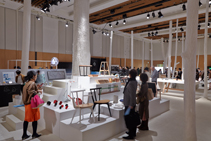
DESIGNTIDE TOKYO
DESIGNTIDE TOKYO, which Ohara directs, is a design event showing the works of invited creators and the latest trends in design. Visitors are free to touch the products and can buy them directly from the designers. The event was held this year as usual at the Tokyo Midtown Hall.
Event period: Oct. 31, (Wed)-Nov. 4, (Sun) 2012
I came to Tokyo when I was 22. I hardly knew anything about Roppongi and since I was usually stuck all day at the design office in Shibuya, I didn't have a clue about the things around me. (laughs) As for Roppongi, I had the impression of it being an international place - like an airport lounge filled with people from all over the world.
Nagasaka I used to come to Roppongi a lot during the days before Tokyo Midtown was built. The office of architect Arata Isozaki-san is right nearby; when I was at college, I worked part-time there for about two years, so I often came to this neighborhood. After work I would often go to the "WAVE" (record shop) on Roppongi-dori.
I was about 20 then, so Roppongi seemed to me to be a town for adults. There was a time when I became interested in the flower shop near the Roppongi intersection; one night, I followed the staff around to see where they were delivering the flowers to. I discovered that they were delivering them to all kinds of places and I remember thinking, Wow, grown-ups are awesome. (laughs)
OharaRight... all kinds of places.
NagasakaIt was after the burst of the economic bubble. The heyday of Roppongi as an entertainment district was over, and the town was in the middle of development. There was a time when there was an expanse of nothingness behind the WAVE shop. It was such a terribly forlorn sight. A lot seems to have changed since Midtown was built.
OharaThere are quite a lot of crowd-drawing places now, like Roppongi Hills. Before, when neither Roppongi Hills nor Tokyo Midtown existed, the area seemed to be sort of flat.
Design and art should be treated differently
NagasakaWe are here today to talk about what can be done to turn Roppongi into an area of design and art. In my opinion, however, design and art are incompatible with each other because they are different genres. So I think the first thing we should do is not put them together.
OharaOh, I feel the same way too. Design and art are two different things. But it's bothersome to start talking about definitions, so shouldn't we put them together for now?
NagasakaNo, no, no. First of all, it's a real problem if you are thinking of using design and art as symbols of something that cannot be specified - something that is fuzzy. I have an office and I share the building and the art gallery with other people. I know from experience that there are different types of creators; the design people and the art people are totally different breeds. The term "artistic design" is often used, but I don't think such a genre actually exists.
Design is linked to business and has a social function of contributing to commerce. So in that respect, I can see that it is compatible with Roppongi. But art and Roppongi.. what has art got to do with Roppongi? Quite honestly, I don't see what the purpose is of turning Roppongi into an art town.
Is it because there are art museums in the Tokyo Midtown and in Roppongi Hills? I suppose that if an art town means a town that has art works, it's possible to make an art town if you have the money. But unless you have the participation of the artists themselves, nothing really gets started, and people won't be able to deepen their understanding of art. If you want artists to carry out their activities here, you need to think about why you want to make Roppongi into an art town; you need to use words to define what kind of vision you have. Without doing that, I feel it would be difficult to go forward.
Ohara I agree. A town that draws people who want to look at art is very different from a community that attracts people who create art.
NagasakaIf you are looking to gather interesting people who are doing artistic activities, you should keep in mind that in Japan, many artists cannot live on art alone and have to do other jobs to make a living; they cannot afford to pay high housing rates. Of course, the artists who have been successful can live in expensive places, but it's virtually impossible for the budding artists who are about to shape society. And there doesn't seem to be a lot of places in Roppongi which are suitable for creative activities. You need a certain amount of space, and there's an uptight atmosphere here - as if unconventional activities will be frowned upon. I'm not sure that artists would want to come to such a place.
OharaRoppongi is such a convenient place. It's so convenient, with so many people, and this kind of environment can actually be an impediment to creating things. Artists living here would face interference by other people. And in their everyday lives, they would not be able to avoid seeing the facial expressions of people. If I were an artist, I would probably find it difficult to find the time and peace to create my own work. After all, artists tend to be types who wish to avoid interacting with other people as much as possible.

Ways to link the economy with artists
NagasakaNonetheless, if you really want to turn Roppongi into an area of art, I think you should first consider how you can link the "economy" of Roppongi with the artists. From the perspective of the artists, the issue of "economy" is about having enough time in their daily lives to do creative work, and it's also about selling their works to collectors. It's important to think about setting up a system in Roppongi that allows artists to make a living.
In the Netherlands, there is a regulation stipulating that when a government builds a public facility, a certain amount of the construction costs must be spent for art. There are detailed rules; for example, when the construction costs are about 100-700 million yen, 2 percent must be spent on art, and when the construction costs are more than 700 million yen, 1 percent must be spent on art. This regulation has a long history; it's been in place since 1951 and it's one of the factors that have helped draw artists to the Netherlands.
Unless specific programs like that are set up, I think it would be difficult to incorporate art into a place that is already running without art. Germany also has a large budget for cultural policies; it has a reputation as an industrialized nation with an understanding for the arts. Britain too, has excellent cultural policies which we could learn from.
OharaThere needs to be real policies alongside the vision. Otherwise, Roppongi might give the impression of being an area of art, but things would essentially stay the same. It would be tough for the whole area to change unless there is a certain framework established through rules and regulations.
The education and environment to foster understanding of art
OharaIn Japan today, people seem to think that art is simply about displaying art works in museums. That seems to be the general notion. The most important thing though, is to understand the thoughts behind the creation of art works; the people looking at the works need to have thinking skills. Without those skills, it's pointless just going to art museums, looking at the works and saying, "Ah, very nice." Perhaps people with a certain amount of knowledge may be able to appreciate paintings, but when it comes to contemporary art, people become totally clueless because they are not equipped with thinking skills.
The Tate Modern in London is one of the world's leading contemporary art museums with works from the 20th century to the present. Admission is free, and inside, there are times when children are making sketches of the works. That in itself shows how the museum is playing a vital role in education. The Tate Modern displays works in a historical context and allows visitors to think about the context and the meaning of the works. It's a totally different approach from simply showing art works and people just voicing their personal likes and dislikes. We need to start by taking the educational steps.

Tate Modern
A national art museum in London's South Bank region. Formerly an electric power station, the seven-story building has many exhibition halls of various sizes.
Tate Modern lit up at night, 2000NagasakaThe people who look at art also need to recognize why art needs to exist. The Europeans seem to have a good understanding of this, and that's probably because of their environment and education.
As for the arts program in the Netherlands that I mentioned earlier, the cultural policy to support design was adopted in the 1950s and it took a few decades for the country to become a leader in the global art scene. Things don't change that easily, so time is needed to put methods into place and build up a foundation based on understanding. It's not enough just to have great artists. The people who appreciate art and the people who pay for art have to evolve as well.
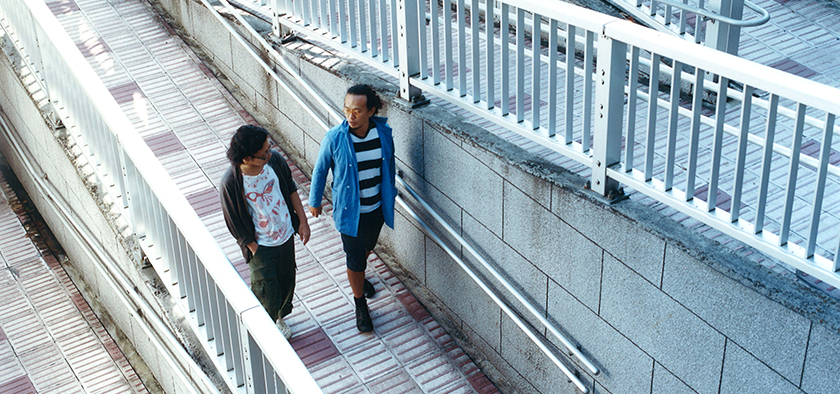
Places which are attractive to creators
NagasakaFrom an architect's point of view, Havana in Cuba is a nice city. The people there express their emotions in a straightforward manner. They are all poor in the same way, but they don't let their poverty get them down. Seeing the locals is like looking at a real life version of the movie "Always- Sunset on Third Street." The houses and alleys are connected and there are noisy groups of children playing outside. The houses are open, but things don't get stolen. There are very ordinary people living in old Art Deco buildings. I think it is wonderful the way life goes on in that city.
From the perspective of creativity, I think Amsterdam in the Netherlands is a fine place. There is the Lloyd Hotel designed by the architect firm MVRDV and Droog Design; if you stay there for a week you can get to know all kinds of artists and designers who are gathered there. Whenever I get the urge to do something in Amsterdam, I can count on the people I got to know at the hotel to come together for a project. The environment there is very conducive to creating things.

Lloyd Hotel
A hotel with 119 rooms located in the Eastern Docklands of Amsterdam, capital of the Netherlands. Each room has a different interior and the hotel is a popular tourist destination.
OharaMy favorite city is Helsinki. There's nothing I particularly want to do there; it's just a place where I feel mentally at ease. The residents don't seem to interfere in other people's affairs that much and they are highly cultured. I think it would be pleasant to be in the company of such people. The city is small and cozy too.
I also think Antwerp in Belgium is well-balanced; it's one of the cities I dream of living in. Antwerp also seems to be a place where you don't have to work excessively hard. In London, you have to really exert yourself, but in Antwerp, it seems that the people are relaxed and at the same time sophisticated.
This is going off topic a bit, but I have plans to rent a house in Hokkaido. I'm from Kochi Prefecture, but I like cold regions. When the weather is warm, I don't feel like doing anything. I like it when the air is cold and makes my skin feel tingly.
NagasakaCold regions are not for me...
OharaBut it's a fact that the average global temperature is rising. The southern parts will eventually become tropical, so I feel convinced that from now on, it will be good to live in the north. I also think that the capital of Japan might be transferred to Hokkaido in the future.
Creating a special zone for Roppongi
NagasakaYou think the capital will move to Hokkaido?! Well, while we're on the topic of other regions, I do feel that it's much easier for communities outside Tokyo to undertake projects. In Tokyo, there are too many people and it's difficult to set a direction through discussions. In places like Osaka and Kyushu, agreements are achieved more easily because the communities are small. It's easier to present the issues to people and gain their understanding.
OharaPerhaps Roppongi is also too large. All its boundaries are shared with other towns and it's difficult to see it as one specific area. Perhaps it would be a good idea to enclose the area of Roppongi, taking a sort of "sakoku" (locked country) policy.
Nagasaka It might be interesting to make it into a special zone.
OharaYes! A special zone sounds great.
NagasakaAs a special zone, one of the measures that could be taken is to rewrite the real estate rules which say that rooms must be restored to their original condition (when vacating apartments). I think that such a move would help Roppongi become a very creative town.
OharaRight.. a special zone where tenants don't need to restore their rooms to their original state.
NagasakaRules are needed to encourage people to become serious about do-it-yourself decorating. If such rules were set up in the special zone of Roppongi, things would change considerably. Of course it would lead to more risks but it would certainly attract more artists. And with more artists working here, Roppongi will come to have a stronger influence. If people with a certain amount of money established a special zone and changed the real estate rules, I'm sure it would have a very significant social impact.
The Building Standards Act is strict, but real estate rules can be changed. And if they are changed, there will be a tangible transformation in people's lives and in the town as a whole.
OharaI can imagine that. It seems that a lot of things will become possible if Roppongi is made into a special zone. Perhaps you might even create a regional currency system to allow for tax exemptions. You know, "creativity" tax exemption for artists.
NagasakaWhat an idea. The thought of tax exemption didn't occur to me. It's true though, that many people are fed up with the rules that are currently in place. So if those rules could be changed, I myself would like to move to Roppongi.
Editor's thoughts
Nagasaka-san and Ohara-san seemed bashful about posing side by side, but being good friends, chatted pleasantly together during the photo shoot. During the interview following the photo session, they talked passionately about the differences between "art" and "design" and the potential of each genre. The interview lasted for three hours, making it the longest of the 15 interviews we have held so far. (edit_rhino)




